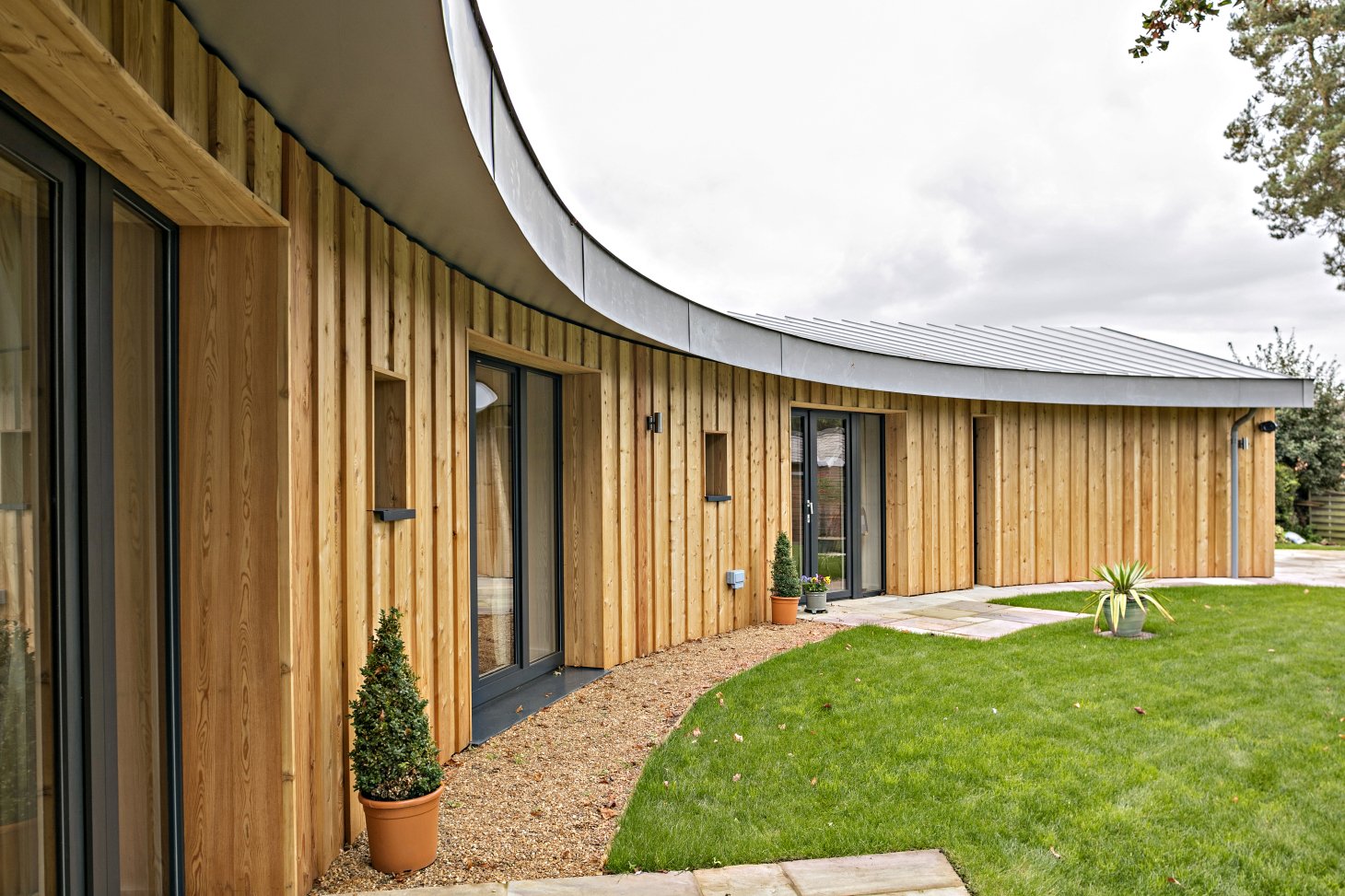
Building with H+H aircrete meant Lime Tree Lodge achieved impressively low U-values and Passivhaus certification.
For this self-build project, the structure’s energy efficiency rating and environmental assessment was key. H+H products were chosen because of aircrete’s high thermal performance, helping to meet stringent Passivhaus requirements.
Contractors Grocott and Murfit built a single bungalow in Swaffham, Norfolk, designed to Passivhaus standards. H+H’s Celcon Block Standard Grade was specified for the internal leaf and external leaf for the timber boarded elevations on the structure.
Having looked at other alternatives, to meet Passivhaus standards, the contractors opted for H+H products due to their speed of construction, stability, and thermal mass. Faced with both brick and timber, the bungalow had an external wall U-value of 0.096 W/m2K for the timber faced walls and 0.098W/m2K for the brick faced walls.
These figures are vastly lower than the U-values achieved from homes built to standard Building Regulations, but also lower than typical Passivhaus external walls U-values (0.1 to 0.15 W/m2K).
H+H’s Celcon Block Standard Grade is a key contributor to achieving these results with a thermal conductivity of 0.15W/m2K. Aircrete has the advantage of having an inherent thermal efficiency which helps achieve low fabric U-values. Further benefit is gained with reduced heat loss from thermal bridges and hence reduced energy demand to provide heat in winter
Dan Higginbotham, of architect Parsons + Whittley, remarked: ““H+H provided us with advice on block types and their suitability for this Passivhaus project. Compared to a timber frame solution the H+H products allowed for a faster build process, enhanced stability and better thermal mass qualities allowing us to reach Passivhaus standards”.
H+H aircrete has exceptional sustainability credentials: not only does it provide excellent thermal and acoustic insulation and contributes to airtightness but, being manufactured from up to 80% recycled materials, it is sustainable both in manufacture and in use.
To find out more about the Lime Tree Lodge build, read the full case study here.